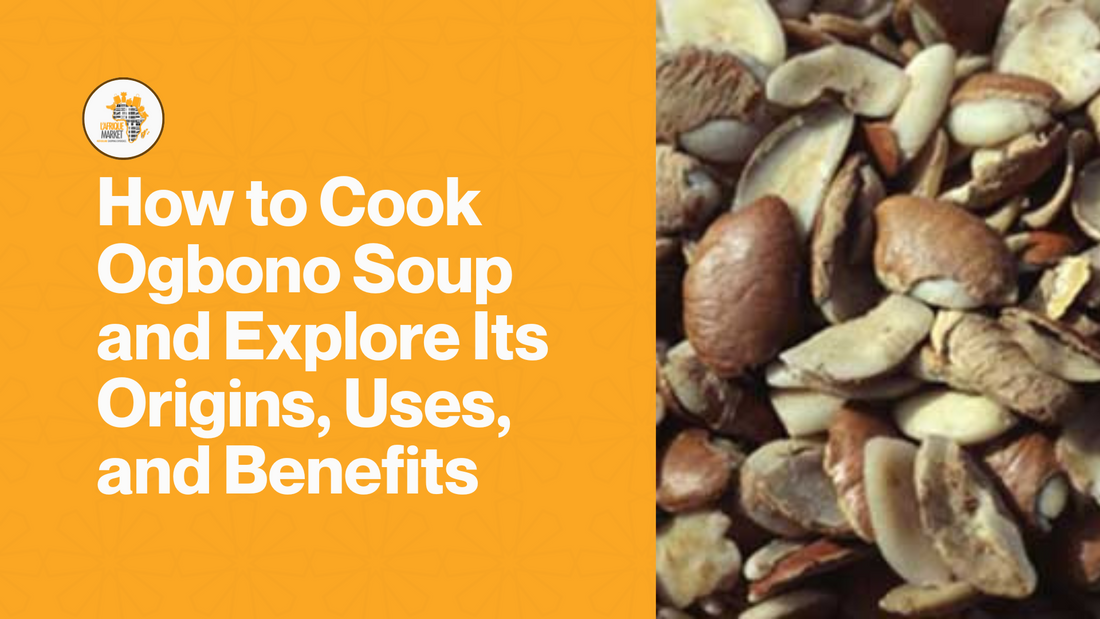
How to Cook Ogbono Soup and Explore Its Origins, Uses, and Benefits
Share
Ogbono, commonly known as African wild mango or bush mango, is a powerhouse ingredient that has shaped the soul of West African cuisine for generations. Celebrated for its distinctive “draw” in soups, rich flavor, and impressive nutritional profile, ogbono seeds are at the heart of one of Nigeria’s most cherished culinary traditions.

Image from: Sunday Agro
Native Roots and Cultivation
Ogbono seeds come from the Irvingia gabonensis tree, thriving in the lush rainforests and savannas of Central and West Africa. In Nigeria, ogbono trees are especially common in the southern regions, including Igboland and neighboring states, but the tree also flourishes in Cameroon, Gabon, and other African countries where the climate allows. Each community has its name for the seed—“ogbono” for Igbos, “apon” or “oro” for Yorubas, “uyo” for the Efik, and so on.
The journey begins with planting seeds or grafted saplings. While traditionally grown trees can take up to a decade to bear fruit, grafted varieties begin producing in as little as three to four years. Once the large green fruits mature, they fall to the ground and are split open for their pungent-smelling pulp and, more importantly, the prized ogbono seeds inside. These seeds are washed, dried, and prepared for market.

Image from: Baobab Mart
Why Ogbono Is So Valued in African Cooking
Ogbono seeds are revered not just for their earthy taste, but for the magical way they lend silkiness and body to traditional “draw” soups. Ground ogbono acts as both a thickener and flavor enhancer, creating a soup that is hearty, satisfying, and perfect for scooping up with chewy swallows like pounded yam or fufu.
Nutritional Value
Packed with healthy fats and protein, ogbono provides substantial energy. Beyond their culinary use, the seeds and fruit also contain fiber, vitamins, and minerals, making them a functional food in many African diets.Also read: Where to Buy Authentic African Ingredients in ChicagoHow to Prepare and Cook Ogbono
The preparation of ogbono soup is an art in itself, and every family has their special techniques or secret additions. Here’s how ogbono is used in the kitchen:- Grinding the Seeds: The dried seeds are ground into a fine powder—this is what transforms a regular soup into the signature thick and stretchy ogbono stew.
- Mixing With Palm Oil: The powder is first stirred into warm palm oil, forming a richly colored paste.
- Combining With Broth and Protein: The paste is added to a simmering pot of meat or fish stock, often with beef, tripe, goat meat, or dried fish. Flavors are layered with onions, spicy peppers, and crayfish.
- Adding Greens: Chopped greens like pumpkin leaves (ugu), spinach, or bitterleaf are often added for freshness.
- Optional Extras: Some cooks blend ogbono with okra for extra “draw,” or throw in ingredients like periwinkle, snail, or ogiri for depth.
 Image from: Knorr
Image from: Knorr
Cooking Variations and Creative Twists
-
Frying Technique: Some recipes call for briefly frying the ogbono powder in palm oil to highlight its nutty flavor before adding it to the soup.
-
Hybrid Stews: Ogbono pairs beautifully with okra or egusi, another iconic thickener, producing a fusion of textures and flavors.
-
Vegetarian Versions: Skipping the meat and focusing on mixed mushrooms or extra greens creates delicious vegetarian adaptations.
Other Uses and Benefits
While ogbono is most famous for soups, its applications extend further:- The dried seeds, when roasted, make a delicious snack.
- Some local remedies use ogbono seed for its digestive benefits or as an appetite suppressant.
- The fruit pulp can be eaten directly, although the seed remains the star in most kitchens.
Common Soup Ingredient Variations
| Protein Options | Greens and Vegetables | Additional Flavors |
|---|---|---|
| Goat meat, beef, tripe | Pumpkin leaves, okra | Crayfish, ogiri |
| Smoked/dried fish, snails | Spinach, bitterleaf | Stockfish, chili peppers |
| Cow skin (kpomo), periwinkle | Uziza leaves | Onion, seasoning cubes |
